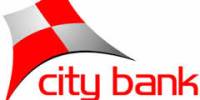Development of Electronic Banking in Bangladesh
In Bangladesh, Banking industry is mature to a great extent than earlier period. It has developed superb image in their various activities including electronic banking. Now modern banking services have launched by some multinationals and new local private commercial banks. Electronic banking is one of the most demanded and latest technologies in banking sector. This paper tried to unearth the present status of electronic banking in banking sector in Bangladesh.
Keywords: Electronic Banking, Bank , Bangladesh
Introduction:
In Bangladesh, multinational banks are operating for long besides our nationalized, private and specialized banks. However, much of the resulting research has concentrated on providing evidence of the association between consumers’ usage patterns of ATMs and their demographic profiles (Hood, 1979; Murphy, 1983) and, more recently, consumer psychographic profiles (Stevenset al., 1986). Besides, the banking services of nationalized, private, and multinationals are different by quality of their services. Multinational banks are offering better services than others. They offer better customer services, personal financial services, corporate facilities, trade services with the help of efficient operational department, credit department, information technology department and the most important department is the marketing department. Presently they are thinking to offer door-to-door services, 24 hours banking services with electronic banking, pay and cash management through internet services. Moreover, waiting to introduce intensive e banking of the multinational banks in Bangladesh. Customer always demands better services, security, and round the clock banking. Multinational banks are considering customers needs and demand in the first line of preference. Moreover, trying to offer and introduce the demanded services by the Bank and changing their offering based on the needs of present and potential customers. Only a few studies regardless of research context have been conducted which focus on the attributes of innovations, as perceived by potential users (Ostlund, 1974; Taylor, 1977). This paper tries to highlight the present condition of electronic banking in Bangladesh.
Objectives of the Study
This research has taken into consideration to accomplish the following objectives:-
1. To unearth the development of e-banking in Bangladeshi banking sector
2. To explore the Structure of electronic banking in Bangladesh
3. To explore the electronic services offered by various bank in Bangladesh
4. To find out the common features of electronic banking in Bangladesh
Rationale of the study
Today’s world is service oriented in every sector. Those who are giving much more services rather than others are giving; he will be well ahead of competition because of getting better competitive advantages . There are 53 different banks working together in Bangladesh. The competition is going up day by day by giving better services and they are trying to develop their own services every now and then. Electronic banking is known to us since 1990. Electronic banking has got tremendous importance in banking sector and banking customer as well. This is why, the researcher find some interest to explore something regarding e-banking in some extent.
Methodology of the Study
The study covered 10 different Multinational, private commercial banks, which mainly situated in the capital city of Chittagong in Bangladesh. Some of the respondents were in the capital city of Dhaka. Data have been collected through a structured questionnaire. In addition, the websites of relevant institutions has been review for updated information. In total 160 respondents interviewed during the study period who are clients of those banks for relevant products. This research has been done through desk study and primary survey. Desk study made through finding out different books, journals, and articles in the libraries. Data has been equipped through relevant statistical methods.
Limitations of the study
There has no plethora research work in Bangladesh perspective particularly. The study covered a very limited number of organizations and respondents as well. Some respondents were neither motivated nor interested in expressing their honest opinions. The scope of the study was also constrained by limited available self funding.
Analysis of Findings
Development of e-banking in Bangladeshi banking sector
Electronic Banking
Electronic Banking is transforming the financial services industry through various impossible innovations. The quantity of cross-border trading and other financial activities is increasing geometrically make possible by technology. It has been made possible by technology, particularly information technology to generate, collect and process information about bank operation and bank customers efficiently and effectively. It provides the ability to create more effective systems of controls in individual institutions and in the market themselves. Compared to the paper based operation, Electronic Banking Systems, in its most proficient form, offer instant verification and transfer and reduces the flow of costly paper in the record keeping process. Application of technology in banking offer opportunity for reduction of both paper and people. Banks have developed EBS for three main reasons (Horseman, Michael J. 1979)
Electronic banking allow banks to expand their markets for traditional deposit taking and credit extension activities, and to offer new products and services or strengthen their competitive position in offering existing payment services. In addition, electronic banking could reduce operating costs for banks. More broadly, the continued development of electronic banking and electronic money may contribute to improving the efficiency of the banking and payment system and to reducing the cost of retail transactions nationally and internationally. Although many financial instrument and systems are now considered as “Electronic Banking” came into the terminology of the financial world in the late 1980s, with the possibility of emergence of true electronic money. All sorts of back-office information management technology and financial services using electronic devices can be included into the term “Electronic Banking”. The development in information technology has contributed positively to economic growth through several channels. ICT
Structure of electronic banking
E-banking is a general term referring to various computer-based technologies for delivering banking services. Electronic banking systems can be divided into two categories by the functional characteristics, viz. back-office electronic banking, and electronic financial instruments or front-office electronic services. Back-office electronic banking provides information management services, and quick fund transfer facilities both for traditional banking and financial instruments and electronic financial instruments. Science inception of primary forms of electronic banking it has been passed through a comprehensive evolution process. Electronic banking services can be grouped into three generations of evolution:
Categorization of electronic banking services
Generation of electronic banking
Back-office
Front-office
First generation
Ledger
Cash management
Head office MIS
Cash dispensers
Second generation
Transaction Processing[offline]
ACHs
Generation of information for
record keeping
Fund transfer
Telephone bill payment
POS systems
Check verification
ATMs
Authorization
Third generation
On-line transaction processing
Centralized processing at
country level
Internet banking
Inter bank transaction processing
Automatic Fund
Transfers
On- line Banking
Home Banking electronic
Direct Deposit
Check Truncation
Lock Box Check
Truncation
Electronic Fund Transfer
Internet Banking
Source: Raihan, Ananya. 1998
Electronic facilities given by different bank in Bangladesh
The following Electronic facilities are providing by different Foreign and Private Commercial banks
(PCBs) in Bangladesh:
Bank accounts: Savings, Current, FDR, PDS, Term Deposit Scheme
All these accounts are maintained in electronic way for the sake of customer satisfaction in Bangladesh. People can deposit their money through electronic device and also can withdraw their money such way. These are the common bank accounts which maintained by the bank customer every now and then and bank is also given high priority or facilities in this regards to their customer.
Special Services
Some Banks render special services to the customers attracting other banks.
Debit Point- of-Sale
An advanced payment system which enables consumers to use an AT M Card to pay for goods and
services, electronically debiting the cardholders account and crediting the account of the merchant.
Cards: Credit/Debit Card
There are two different types of card. One is debit which designate to withdraw own money from the bank in any time. Another one is a credit system which provided by bank to their customer. Customer can enjoy their credit amount while they are in shopping, withdraw cash etc.
Internet Banking
Customers need an Internet access service to handle this type of banking. As an Internet Banking customer, he/she will be given a specific user ID and a confidential/secret or secured password so that they can access to their own account. Here customer can able to see the ledger balances, transfer his money, request something towards bank, etc.
DIGITAL BANGLADESH:
BANGLADESH Bank (BB) has adopted advanced ICT to be digitised in all spheres of its functions including monetary policy, banking supervision and internal management. BB has already introduced e-commerce, e-banking, automated clearing house etc.; a historic move towards achieving higher productivity across all economic sectors including agriculture and SME through use of ICTs. Engineers could be pioneers innovating new applications of ICT, and reaching them to the doorstep of the common people.
The universal role of Information and Communication Technology (ICT) is vital for socio-economic development of a developing country like Bangladesh. Availability of information helps increase productivity, ensures fair and competitive market and empowers marginal people. Digital technology makes doing things easily from any place — using mobile phone as a medium of money transfer and payment of utility bills, for example.
Digital society means knowledge based society. Therefore, the government has placed the vision of 2021 — the year of Golden Jubilee of our independence. The vision envisages a digital Bangladesh with excellence in information and communication technology and high-performing inclusive economic growth.
If Bangladesh goes digital it will be an e-state combined with e-governance, e-banking, e-commerce, e-learning, e-agriculture, e-health and so on. However, the vision encompasses much more. There is a strong correlation between economic and social development of a country and its proficiency in science and technology, so we need a knowledge-based society, efficient management and skilled human resources as well.
We need to extend ICT facility to every village in Bangladesh, so that even farmers can get access to internet connectivity; acquire related information regarding his/her crop or product development, pricing etc. In this connection, the government has already taken initiatives to connect Bangladesh with the second Submarine Cable Network to have secured connectivity with the information superhighway. Realising the potential of ICT for national development, the government has approved the National ICT Policy, 2009 on priority basis.
It is expected that by 2021, Bangladesh will have a countrywide ICT network and high-speed information flow between centre and periphery. Instructions will be transmitted electronically, which will accelerate the national decision-making process and monitor the performance of all agencies.
High level of internet penetration is a must for the development of ICT. The latest statistics (ITU 2007) revealed that internet penetration is only 0.3% in Bangladesh, whereas the rate is 7.3 and 5.3% respectively in India and Pakistan. However, we too are getting ready to experience higher level of internet penetration, particularly with high density of wireless infrastructure. BB, which is indeed the nerve centre of the financial world, cannot remain behind in this race of digitisation.
Bangladesh Bank, being the monetary authority of the country, is at the forefront of the government’s firm drive to digitise. We have already formulated a 5-year strategic plan for the financial sector based on advanced technological applications to deliver services with utmost efficiency. The ultimate goal is to make BB a world-class central bank with high applications of technologies. It should, in fact, transform itself into a paperless organisation within this plan period.
BB has achieved a historic milestone in the trade and business arena, departing from conventional banking with the introduction of e-commerce recently; a giant stride towards digital Bangladesh. Banks have been allowed to make online money transactions, payment of utility bills through internet, transfer of funds (account to account), payments for trading goods and services, and facilitate online credit card payments in local currency.
Indeed, electronic payments will be considered as cash transactions, which will be regulated under the Anti-Money laundering Act as well as other relevant rules and regulations. It is expected that a national payment gateway, connecting all banks for inter-bank transactions (e-banking), will be established soon. Electronic fund transfer will also be possible in near future. Necessary preparations have already been taken in this direction.
Installation of Bangladesh Automated Clearing House (BACH) is another remarkable event in the history of the financial sector in Bangladesh. It will simplify the remittance channel and payment system and, therefore, bring dynamism in business activities.
The system was started in early November 2009 on experimental basis, participated by some well-prepared banks, and will be inaugurated formally soon. Applying sophisticated methods, the system needs only images and corresponding information of the submitted cheque leaves instead of a physical one, and will send them to the Bangladesh Automated Cheque Processing System (BACPS) using a secured communication link.
New cheques/clearing instruments (standardised) will contain Magnetic Ink Character Recognition (MICR) line that encompasses information regarding the amount, transaction code, clients account details, routing number (numeric code assigned to bank branches for easy identification of origin and destination of the instrument), cheque leaf’s serial number and so on. The system will support both intra-regional and inter-regional clearings based on a centralised processing centre in Dhaka and designated clearing regions, and will conform to the international best practices and cost-effective solutions for cheque processing.
Therefore, after getting customers’ cheques for collection in the bank-branch, collecting banks will check the prima facie information of the submitted cheques, capture images and information, and send them to BACPS electronically. BACPS will then process and send the images and information to the paying banks for validation.
Paying banks will examine the pertinent images and information, and send back to the BACPS for payment (further examination if any inconsistency like fund insufficiency or mismatch of signature etc.) Then BACPS will accumulate all the information, work out a single net amount for each bank, and send it back to the collecting banks. As such, the cheque clearing time is expected to be reduced to one day for countrywide payment. In other cases, this will be a matter of couple of hours only.
Mobile banking, using cell phone as a tool, extends banking services to the doors of the people. An account holder can check account history/statement, status on cheques, and payment order, or stop payment, and so forth.
However, initially, three commercial banks have been allowed mobile banking to accelerate inward remittance transfer with the help of the outlets of mobile companies. Recently, BB has strengthened its monitoring and supervision activities on agricultural and SME loans with the help of the existing countrywide mobile network, keeping records of cell phone numbers of farmers and small entrepreneurs.
Online Credit Information Bureau (CIB) report, a pivotal component of risk management measures, is expected to be launched by 2010. Banks and financial institutions will be able to access the CIB data base online, and get the credit report of the concerned borrower. The database will consist of detailed information of individual borrowers, owners and guarantors.
Meantime, a project, On-line Credit Bureau has been started using advanced technology to establish online connectivity between CIB of B B and head offices of all banks and financial institutions. It is crucial to upgrade the capacity of CIB to the policy priority accorded to financial inclusion, expand SME and agricultural lending, and increase overall growth of trade and business.
Online CIB will minimise the extent of default loan by facilitating the banks and financial institutions with credit reports of the loan applicants very quickly, and therefore, lending institutions would not encounter any credit risk while extending lending or rescheduling facility.
A central bank reform program initiated ICT packages include networking, banking application, enterprise resources planning solution, enterprise data warehouse etc., with a view to ensuring efficient management of assets including human resources.
Under the networking program, all the departments of Bangladesh Bank Head Office and its nine branch offices have already been brought under a computer network (LAN/WAN), connecting almost 3,100 PCs. Therefore, any official sitting anywhere (head office or branches) has access to the same kind of resources, and can share knowledge and information and ensure knowledge based management.
Enterprise Resources Planning (ERP) solution covers digitisation of procurement (e-procurement), cash management, access control etc. Meanwhile, recruitment process under B B has been digitised (online application, sorting, validation etc.).
Banking application includes automation of all the accounts with B B (banks, financial institutions and government), foreign exchange management, currency management, treasury and securities systems/module, public debt management module, and also establishment of a central depository system (CDS) to build a platform for secondary trading of treasury bills and bonds.
Enterprise Data Warehouse (EDW) creates an electronic data bank, which will provide all information and statistics of monetary, trade and fiscal areas of the national economy, where all the concerned people of BB will have access to use it for further policy analyses. B B is going to commence web based e-tendering system, which covers announcement of tender, distribution of schedules, bidding etc., to ensure simplicity and transparency of tendering process.
These are only a few examples of how fast the B B is progressing in the process of digitisation of its activities. In addition, it is also taking other banks and government agencies on board to ensure speedy, credible, user-friendly financial services to all.
Moreover, B B has been encouraging green engineering by installing solar panels on its own premise and providing re-financing windows to support speedy development of solar energy, biogas and effluent treatment plants all around the country. And in all these activities the role of green engineers will be vital.
Challenges
The major challenges for Bangladesh are poverty reduction and sustainable development, but neither of these is possible without a strong science and technology base underpinned by excellence in education at all levels and a well-trained work force in ICT. There needs to be infrastructural development and technology transfer throughout the country to disseminate knowledge to even remote areas of the country.
However, the government has taken initiatives to promote ICT among all spheres of people, including the hard-to-reach areas; tax and duty cut on computers, promoting ISP services etc.
A broadband infrastructure is needed with access for all Bangladeshis from their homes, work places, schools and tele-centres with Wimax and 3G network. We also need a digitally literate population and workforce, digital business development, and a legal framework that assures freedom of expression while protecting the rights of creators and innovators towards building an indigenous knowledge and technological base.
At the beginning, we must concentrate on the development of infrastructure in terms of hardware, software and manpower. Skilled manpower from local market must be available to keep the system running without depending on foreign “experts.” Sustainability of digital Bangladesh depends on our enhanced ability to maintain, repair and expand once the system is installed.
In order to manage a sustainable digitised Bangladesh, we need a long-term plan to produce adequate number of scientists, computer and communication engineers, software engineers; technology management experts etc., for further development of our ICT sector and keeping pace with the technological advancement in the developed world.
Otherwise, digital Bangladesh would be highly vulnerable and dependent on foreign manufacturers and experts. Simultaneously, we must encourage our young engineers to move towards utilisation of less or no fossil fuels. This green engineering will have to be one of the strategic components of digital Bangladesh.
Certainly, we will opt for a technology-based economy. But that economy must also be socially responsive to the needs of the disadvantaged. In other words, we pledge to build a more inclusive digital Bangladesh where engineers too will play the desired strategic role.
The vision is to see B B paperless within the shortest possible time — all correspondence (both internal and external) will be online — and achieve higher productivity across all economic sectors including agriculture and SME through use of ICTs. Steps have been taken already to bring overall functions and activities of B B under automation. Its supervisory functions have been further strengthened applying advanced banking techniques with innovative technology.
It can be noted that technology-driven business models followed by the banks and financial intuitions ensure better and faster services to the clients. A recent study of B B revealed that banks that adopt technology are more profitable and reduce risks as they gain maturity in offering such services.
B B has already engaged banks in major programs of upgrading their IT platforms, with ample processing powers and online connectivity, to enable efficient data management, processing and analyses in banks for their own risk management purposes and for reporting to BB.
A holistic approach needs to be taken by all the stakeholders to reach the ICT facilities to the doorstep of the common people. Engineers could be pioneers in this regard, innovating new applications of ICT, and thus move the nation towards digital Bangladesh.
Simultaneously, they should also be responsive to the challenges of climate change, and hence move towards green engineering. B B is well aware of its responsibility in promoting green finance for greener Bangladesh. I am sure engineers too will play their desired role in this fight for a greener energy based digital Bangladesh.
















